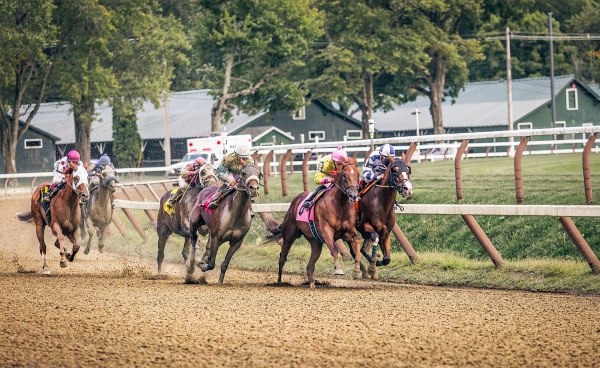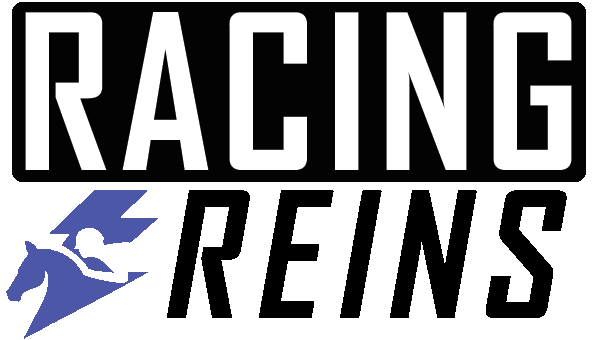
Golden Gate Fields’ final meet could see a 25% cut in overnight purses due to a $3.1 million overpayment of the purse account, according to Thoroughbred Owners of California (TOC) president and CEO, Bill Nader, with further details expected to be released soon.
‣ The overnight purses for Golden Gate Fields’ final meet may be reduced by 25% due to a longstanding overpayment of the purse account, which is overpaid by approximately $3.1 million.
‣ The Thoroughbred Owners of California (TOC) is in negotiations with 1/ST Racing and Gaming, which operates Golden Gate Fields, about the proposed cuts. The cuts could lead to some Northern California trainers relocating elsewhere.
‣ The Stronach Group announced in July that it was closing Golden Gate Fields at the end of December with the goal of increasing field size and adding another day of racing a week at Santa Anita. However, after pushback from industry stakeholders, TSG officials left the door open to delaying the track’s closure another six months.
Golden Gate Fields’ final meet could see a 25% cut in overnight purses. This is due to a longstanding overpayment of the purse account, says Bill Nader, president and CEO of Thoroughbred Owners of California (TOC).
The Bay Area racetrack is set to race from Dec. 26 through June 9, 2024. After this, the facility will close permanently. The purse account is overpaid by around $3.1 million, Nader states.
“There’s a pretty big overpayment that’s been building,” Nader admits. “They’re looking to claw some of it back, but not all of it.” Negotiations are ongoing with 1/ST Racing and Gaming, which operates Golden Gate Fields, regarding the proposed cuts.
Nader suggests that a decrease in overnight purses is a “distinct possibility.” He expects further details to be available Tuesday or Wednesday, when the condition book is issued. “You can increase and decrease purses pending purse generation at any point in any year, so, they’re within their rights,” says Nader.
He gives an example of Maiden Special Weights dropping from $30,000 to $22,500 under the proposed structure. “But this thing’s blown out to a big number,” he says, referring to the purse overpayment. “Handle was down in 2023. They haven’t really cut purses at all. Frankly, they wanted to cut purses last fall—we told them no, and they didn’t.”
Dave Duggan, Golden Gate vice president and general manager, confirms the track had been in discussions with the TOC to cut purses there “for quite some time.” Santa Anita’s overnight purses are also scheduled to be cut around 5% for its upcoming Winter/Spring meet, underway Dec. 26, with $2 million cut from the track’s stakes schedule.
Ed Moger, currently leading trainer at Golden Gate, has around 40 horses stabled there. He suggests the anticipated cuts to Golden Gates’ purses could lead to some Northern California trainers relocating elsewhere.
Officials for Arizona’s Turf Paradise recently announced they hoped to operate a meet there from Jan. 29 through May 4, pending approval from the Horseracing Integrity and Safety Authority. If the 25% purse cut is enacted at Golden Gate, “there would probably be some barns that move there,” Moger says, referring to Turf Paradise.
Moger adds that while he would not relocate to Arizona, such a purse decrease could see him shift a significant portion of his horses south to Santa Anita. “But it’s tougher to win a race at Santa Anita,” says Moger. “I’ll have to play it by ear.”
When asked about the allure from other tracks to Golden Gate’s current trainer colony, Nader suggests that even with a 25% cut, Golden Gate’s purses would still compare favorably with Turf Paradise. The Stronach Group (TSG) announced in July that it was closing Golden Gate Fields at the end of December with the goal of increasing field size and adding another day of racing a week at Santa Anita.
After pushback from industry stakeholders who argued that such an abrupt closure would pose an existential threat to the future of racing in Northern California, TSG officials left the door open to delaying the track’s closure another six months. But they appeared to make such a deal incumbent upon a reshaping of the way simulcasting proceeds are allocated in the state.
The rule of thumb is that proceeds from wagers made in the “northern zone” stay in Northern California to pay for purses and operational expenses, while the proceeds from wagers made in the “southern zone” stay in Southern California for the same purposes. Initially, various stakeholders in Northern California—including representatives of the California Authority of Racing Fairs (CARF)—voiced resistance to TSG’s idea of moving these proceeds south.
In September, however, California lawmakers sought enough buy-in to pass legislation that meant if Golden Gate Fields is not licensed to operate beyond July 1 next year, proceeds from simulcast wagering in the north are funneled south when there is no live racing in the northern half of the state after that date.
When asked about recent turn of events involving Golden Gate Fields, Moger appeared resigned to the situation. “I’ve been here for almost 50 years,” said Moger. “I’m not too happy about it.”
